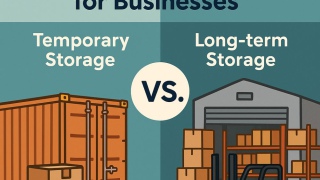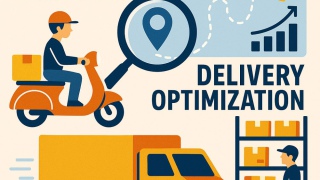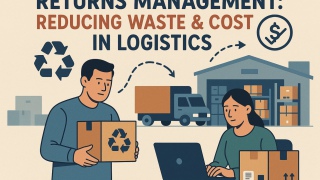Warehouse Automation ROI: Is It Worth the Investment?

In the modern logistics landscape, warehouses are no longer just static storage facilities. They are dynamic hubs of activity, under constant pressure to meet increasing demands for speed, accuracy, and efficiency. As businesses strive to stay competitive, the term warehouse automation has become a central topic of discussion. While the benefits—faster order fulfillment, reduced errors, and enhanced productivity—are widely recognized, a crucial question remains for many decision-makers: is the ROI (Return on Investment) truly worth the substantial financial commitment?
This article delves into the complexities of automation investment, moving beyond the high-tech robotics of industry giants to explore a more holistic view that includes foundational, high-impact solutions. We will perform a comprehensive cost-benefit analysis to help you determine if and how automation can deliver a significant return for your business.
The Evolving Definition of Warehouse Automation
When people think of warehouse automation, images of robotic arms, automated guided vehicles (AGVs), and vast conveyor systems often come to mind. While these are certainly part of the picture, a more practical definition is required for the average business.
Automation is not a single, all-or-nothing solution. It exists on a spectrum, starting with the intelligent design of a warehouse’s core infrastructure. For many companies, the most significant improvements in efficiency and ROI come from optimizing existing, manually-operated processes. This can include:
-
High-density Pallet Racks (
palletstellingen): Optimizing vertical space and improving accessibility for forklifts. -
Modular Shelving Systems (
legbordstellingen): Creating a highly organized and scalable environment for smaller items, reducing picking time. -
Ergonomic Workbenches (
werkbanken): Streamlining the packing and assembly process, reducing manual strain and wasted movement. -
Efficient Storage Cabinets (
stalen kasten): Securing valuable tools or parts and making them easy to find, preventing loss and saving time.
These foundational elements are the building blocks of any efficient operation and are often the most accessible and highest-ROI form of "automation" for small to medium-sized enterprises.
The Core Components of ROI Calculation
To perform a proper cost-benefit analysis, you must first meticulously itemize both sides of the equation.
Costs to Consider:
-
Initial Investment: This includes the purchase price of equipment, whether it's a new system of pallet racks or a full-scale robotic solution.
-
Implementation & Integration: The cost of installation, potential downtime during the transition, and the integration of new systems with existing WMS (Warehouse Management Systems).
-
Training: The expense of training staff to operate and maintain the new automated equipment.
-
Maintenance & Support: Ongoing costs for maintenance, repairs, software updates, and technical support.
-
Hidden Costs: These can include unexpected infrastructure upgrades (e.g., floor resurfacing for AGVs), changes to safety protocols, and insurance adjustments.
Benefits to Quantify:
-
Reduced Labor Costs: This is often the most significant and most-quantifiable benefit. Automation reduces the number of man-hours required for tasks like picking, packing, and moving goods.
-
Increased Throughput and Productivity: Automated systems work faster and with greater consistency than human workers, leading to more orders processed per hour and the ability to handle peak demand.
-
Improved Accuracy: Automated processes minimize human error, leading to fewer mis-picks, returns, and customer service issues. This directly translates to cost savings and improved customer satisfaction.
-
Optimized Space Utilization: High-density storage solutions, such as intelligent shelving systems and mobile cabinets, allow you to store more inventory in the same physical footprint, potentially delaying or avoiding the need for a larger, more expensive warehouse.
-
Enhanced Safety: Automation reduces the risk of workplace injuries by taking over heavy lifting and repetitive tasks, leading to lower insurance premiums and a safer environment for employees.
-
Scalability: A well-designed automated system allows a business to grow without a proportional increase in labor or physical space, providing a significant competitive advantage.
A Deep Dive into Cost-Benefit Analysis
The key to a successful ROI calculation is not just listing costs and benefits but quantifying them in monetary terms.
For a business considering an upgrade to its shelving systems, the cost-benefit analysis might look like this:
-
Cost: The purchase and installation of new, ergonomic
legbordstellingenandwerkbanken. -
Benefit: The new layout and equipment reduce the average picking time per order by 15 seconds. If the warehouse processes 1000 orders per day, this saves over 4 hours of labor daily. At an average wage of €20/hour, this is a saving of over €80 per day, or approximately €20,000 per year. The initial investment might be recouped in a matter of months, demonstrating a clear and compelling ROI.
For a more advanced automation project, the calculation becomes more complex, but the principle remains the same. The goal is to calculate the payback period—the time it takes for the accumulated benefits to equal the initial costs. A shorter payback period indicates a stronger ROI.
A phased approach is often the most strategic way to invest. Start with foundational, high-impact improvements. Implementing a new system of pallet racks might significantly improve space utilization and forklift efficiency, yielding a strong ROI that can then be used to fund the next phase of automation, such as a more advanced software system or a semi-automated conveyor.
The Role of Foundational Equipment in Automation ROI
It is impossible to achieve a high ROI from advanced automation without a solid, optimized foundation. A robotic arm picking from disorganized shelves will not be efficient. A high-tech AGV navigating a cluttered, poorly laid-out warehouse will not perform optimally.
This is where the products and services from https://magazijnservice.nl/ play a critical role. Their offering of robust, high-quality shelving systems, steel cabinets, and workbenches provides the essential infrastructure that underpins any successful automation strategy. Investing in these foundational elements is not just about organizing a space; it's about automating a process. It's about designing a workflow that is inherently more efficient, safer, and ready for future, higher-tech investments.
Conclusion: Making the Investment Worthwhile
Is the ROI of warehouse automation worth the investment? The answer is a resounding yes, provided the investment is strategic and well-planned. It is not about buying the most expensive technology; it is about identifying the specific bottlenecks in your operation and choosing the right solution—whether it's a simple ergonomic workbench or a complex automated system—to address them.
A thorough cost-benefit analysis, a focus on foundational infrastructure, and a clear understanding of your business goals are the keys to unlocking the true potential of warehouse automation. By taking a measured, strategic approach, you can ensure that your investment pays off not only in financial returns but also in long-term operational efficiency, safety, and scalability.
_0x70_d59.png)



